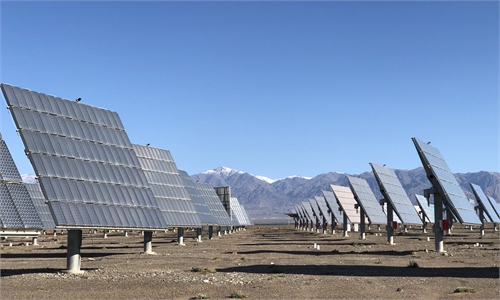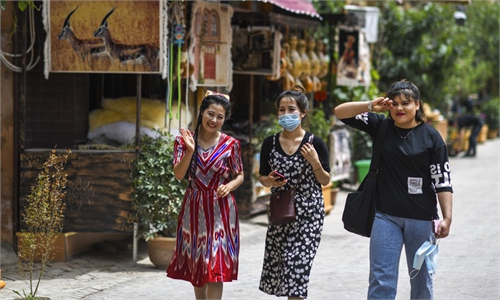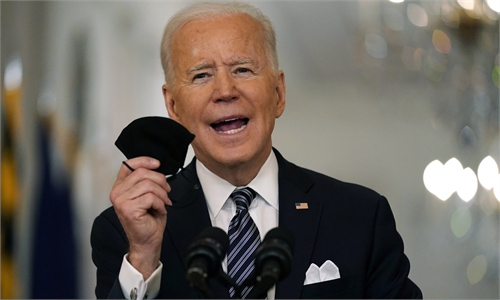China releases 8th white paper detailing human rights progress in Xinjiang
8th document shows China increasingly open in refuting rumors
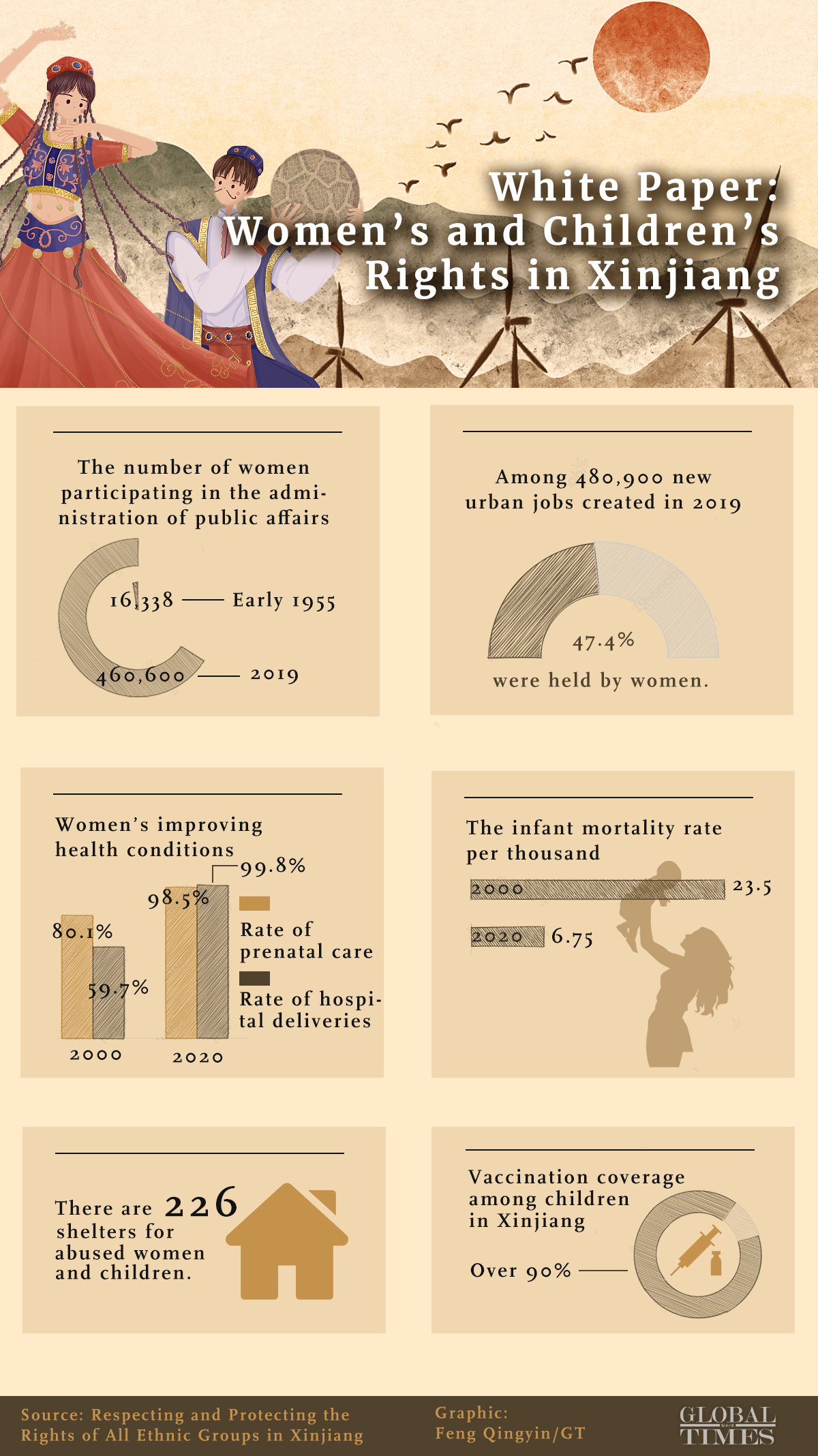
White Paper: Women's and Children's Rights in Xinjiang Graphic: Feng Qingyin/GT
China released on Wednesday a white paper detailing the country's progress in protecting the rights of all ethnic groups in Xinjiang Uygur Autonomous Region, the eighth white paper to introduce the progress on human rights in the region from all aspects since 2016. It also signals China’s increasing openness and transparency in displaying the achievements in the region, refuting rumors and lies made by the US-led campaign.
For more than 70 years since 1949, the Communist Party of China (CPC) and the Chinese government have upheld a people-centered approach to human rights protection, treating the rights to subsistence and development as the primary human rights and with all efforts that have been made, human rights have got steady progress in Xinjiang region, said the white paper, titled “Respecting and Protecting the Rights of All Ethnic Groups in Xinjiang.”
Being released by the State Council Information Office on Wednesday, the white paper introduces local residents’ rights on seven fields, including their civil rights, political rights, economic and cultural rights and freedom of religious belief.
This is the eighth white paper released by the State Council and previously ones are on the progress on human rights, cultural preservation, Xinjiang’s anti-terrorism measures, the vocational training and education centers, freedom of religious belief, historical matters concerning Xinjiang and employment and labor rights.
All these white papers on Xinjiang showed the international community with data and examples that the Chinese government is taking concrete measures in promoting human right of all the ethnic minorities in every aspect Xinjiang, Mao Junxiang, executive director and professor at the Human Rights Studies Center at Central South University, told the Global Times on Wednesday.
Mao said that telling the truth about Xinjiang is especially important amid current anti-China campaign led by the US and the battles on China’s Xinjiang topics at the 47th session of the United Nations Human Rights Council. “These white papers would help refute rumors and dismiss misunderstandings.”
The Wednesday white paper starts with how civil rights have been protected in Xinjiang with anti-terrorist measures being taken to crack down on acts that had seriously endangered the lives of people of all ethnic groups in Xinjiang and trampled on human dignity.
Xinjiang has carried out preventive counter-terrorism measures, including the establishment of vocational education and training centers, to protect basic rights. For more than four years since the end of 2016 there has been no terrorist incident in Xinjiang. “The infiltration of extremism has been effectively curbed, and the right to life of people of all ethnic groups has been fully protected,” read the white paper.
The core of China’s policies in Xinjiang is about to fight against terrorism, which has made achievements in recent years together with progress in other fields and these have been presented in the white paper, said Xu Jianying, a research fellow at Chinese Borderland Research Institute of the Chinese Academy of Social Sciences.
Xu told the Global Times that China’s measures on anti-terrorism and de-radicalization are preventive ones and are in accordance with the country’s laws and the UN’s regulations. These ideas have been well presented in each white paper. Moreover, these white papers also offered authoritative explaining on polices and data and examples to refute lies and rumors made and spread by the US and some Western countries.
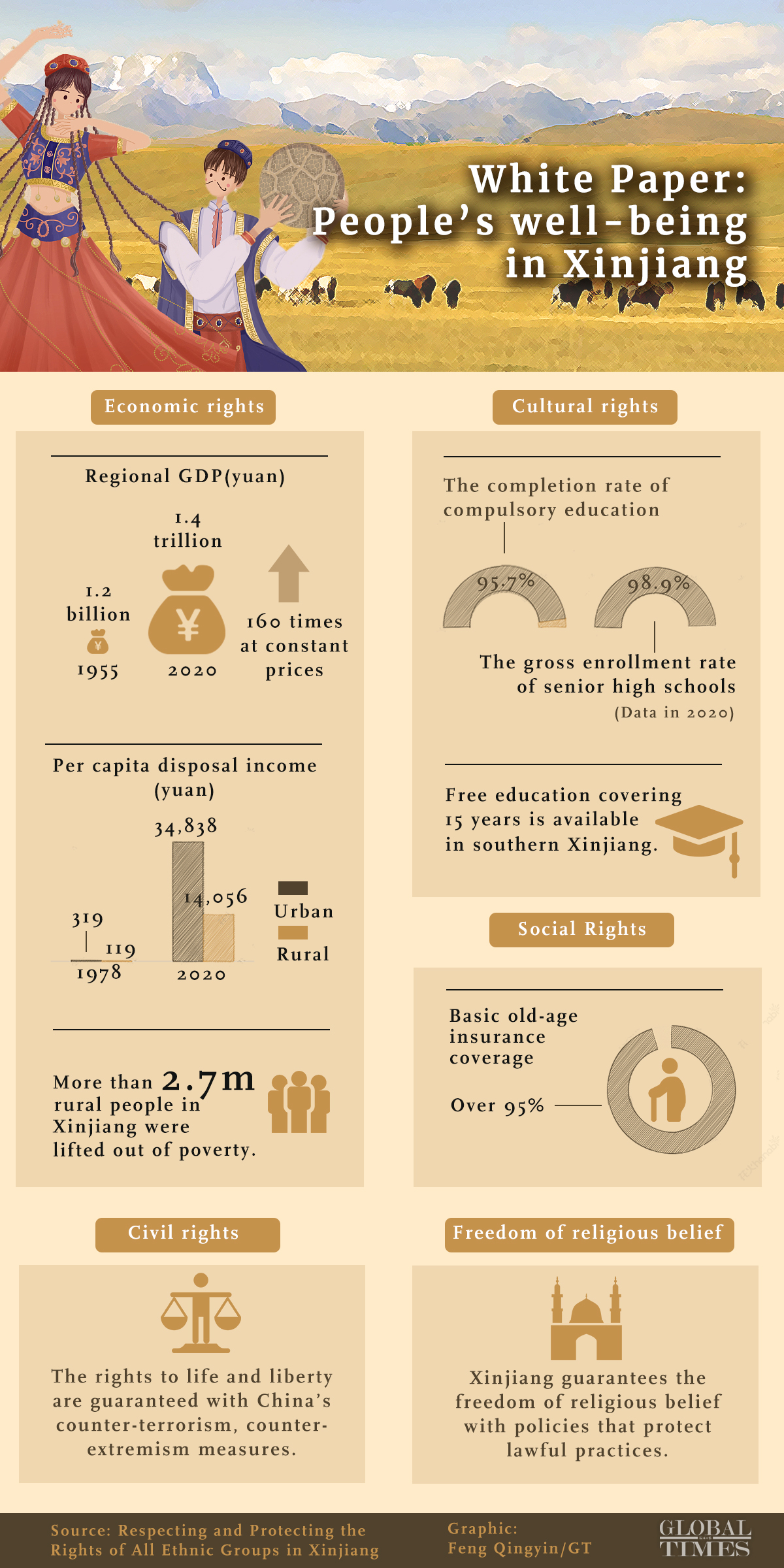
White Paper: People's well-being in Xinjiang Graphic: Feng Qingyin/GT
For example, the Wednesday white paper clearly showed the social and economic developments in the region for the past decades by listing the changes on Xinjiang’s GDP from 1955 to 2020 - Xinjiang’s GDP soared from 1.2 billion yuan to 1.4 trillion yuan, and its per capita GDP rose from 241 yuan to 53,593 yuan, a notable increase of about 160 times and 30 times at constant prices.
“Lies would be easily poked when facing the solid data and truth,” said Xu.
Another example is how the right to work of all ethnic groups in Xinjiang has been well protected. The white paper noted that from 2014 to 2020, the total employed population in Xinjiang grew from 11.4 million to 13.6 million, up by nearly 20 percent. The urban employed population grew by an annual average of 470,000, of which 149,000, or nearly 32 percent, were in southern Xinjiang. An average of 2.8 million urban job opportunities were provided annually to the surplus rural workforce, of which 1.7 million, or more than 60 percent, were offered to those in southern Xinjiang.
Mao also said that “frequently releasing white papers on Xinjiang, holding press conferences to introduce the situation of the region, having online meetings with foreign diplomats and media and inviting foreign diplomats, media and scholars to visit Xinjiang… all these have showed the Chinese government is more confident and transparent in showing the real Xinjiang region to the world with nothing to hide.”

